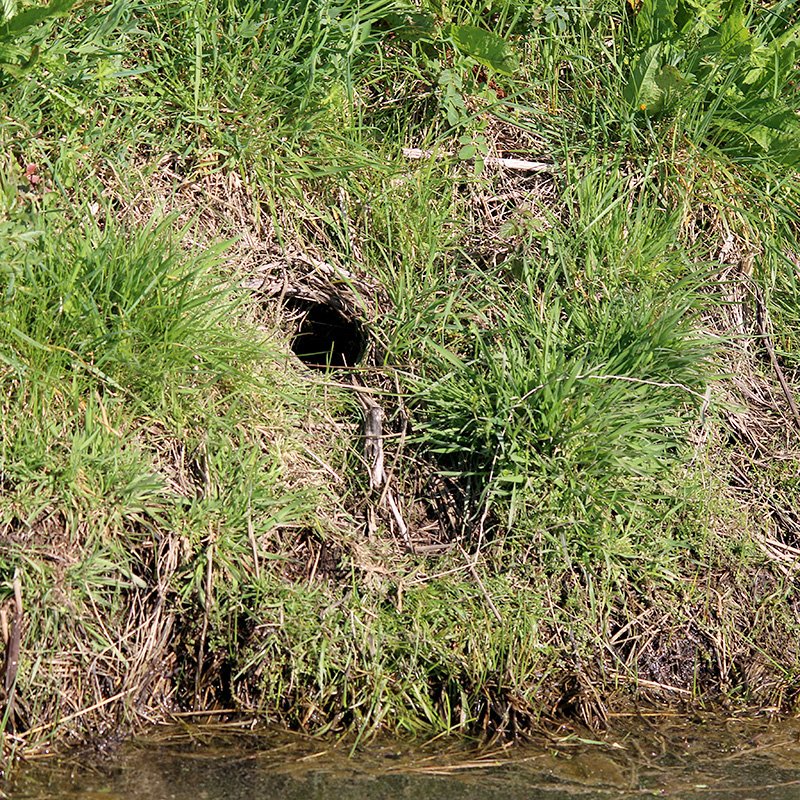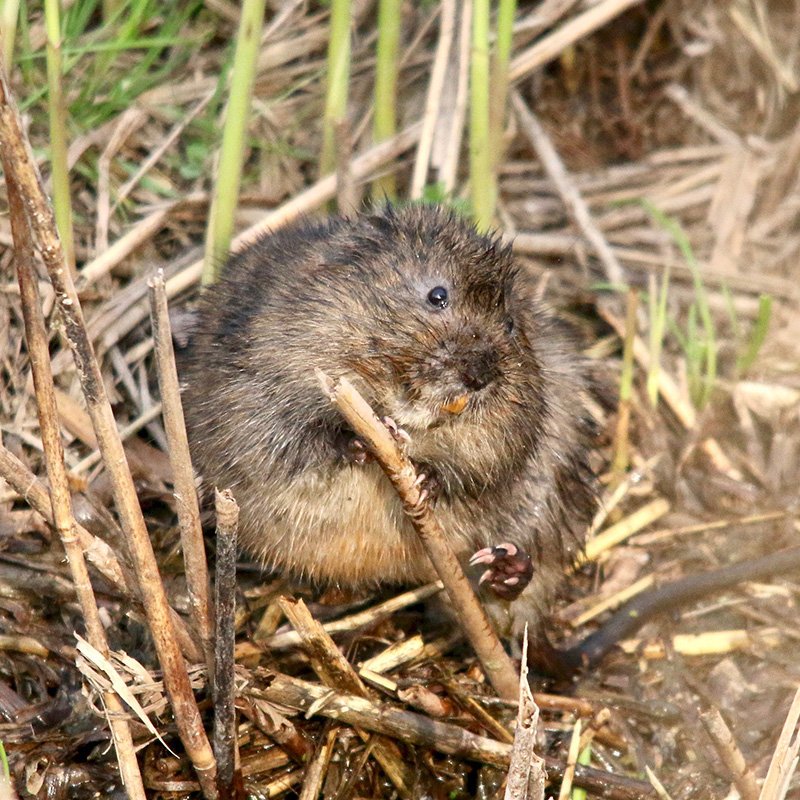Arvicola amphibius
This charismatic mammal has dark chestnut-brown fur, a blunt-rounded nose, small black eyes and short rounded (almost hidden) ears. The water vole measures around 140 to 220mm head to body, its hair-covered tail adding an extra 95-140mm. They are active during the day, and can often be seen sitting on their hind feet feeding on plant stalks held by their front paws.
The water vole has been made famous through the ‘Ratty’ character in ‘The Wind in the Willows’ book by Kenneth Grahame. But sadly, they have undergone the most serious decline of any wild mammal in Britain during the 20th Century; between 1989 and 1998, the population fell by almost 90%! (Source: PTES)
What they eat
They eat a wide range of bankside vegetation including grasses, common reeds, sedges, roots, tree bark and fruit. Occasionally insects and other small invertebrates may be eaten.
Where and when to see them
Water voles can be seen all year around, living along rivers, streams, reens, dykes, ditches, around ponds and lakes, and in marshes, reedbeds and wet moorland.
Look out for field signs revealing the presence of water voles. They create burrows in steep grassy banks with an area of short nibbled grass (a ‘lawn’) at the entrance. They also deposit shiny rounded, cigar-shaped droppings in latrines, and often create piles of nibbled grass and stems showing a distinctive 45 degree angled cut.
Listen carefully, water voles often dive into water when disturbed making a characteristic ‘plop’ sound.
View a water vole 10km distribution map of Wales



